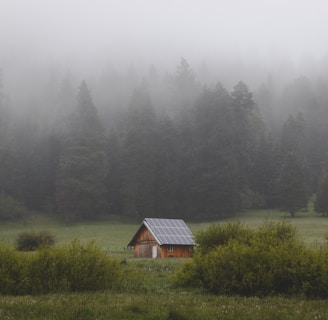How to Start Living Off-Grid: A Beginner’s Guide
Learn how to start living off-grid with this beginner’s guide. Discover essential steps, energy solutions, food independence tips, and practical advice for building a self-sufficient lifestyle.
8/18/20253 min read
Living off-grid is a dream for many people seeking independence, sustainability, and freedom from modern utility systems. But for beginners, the idea can feel overwhelming. Where do you start? How do you get energy, water, and food without relying on public infrastructure? In this guide, we will break down everything you need to know to start living off-grid, step by step, so you can build a self-sufficient lifestyle with confidence.
Step 1: Understand What Off-Grid Living Means
Off-grid living means being independent from public utilities such as electricity, water, and gas. It is about producing your own resources, managing waste responsibly, and often growing or sourcing your own food.
Some people choose a completely off-grid lifestyle, while others adopt partial independence, using solar power but still connected to a water system.
Understanding your goals is the first step. Decide whether you want full autonomy or a semi-off-grid lifestyle to start.
Step 2: Choose the Right Location
Location is critical for off-grid living. Factors to consider include:
Sunlight exposure for solar power
Water sources such as wells, streams, or rainwater collection
Soil quality for gardening and growing food
Accessibility for emergencies and supplies
Climate to determine heating and cooling needs
Research zoning laws, building permits, and local regulations before settling. Choosing the right location can make off-grid living much easier and more sustainable.
Step 3: Plan Your Energy Needs
Energy is the backbone of off-grid living. Most beginners start with renewable energy sources such as:
Solar panels – popular for generating electricity with minimal maintenance
Wind turbines – useful in windy regions for continuous energy supply
Hydropower – if you have access to a flowing stream or river
Backup generators – gasoline or propane generators for emergencies
Estimate your energy needs by calculating electricity usage for lights, appliances, and essential devices. A well-planned energy system ensures reliability and reduces stress.
Step 4: Secure Your Water Supply
Water is life. Off-grid living requires a dependable source of clean water. Consider:
Wells – drilling a well can provide a consistent water supply
Rainwater collection – using barrels and tanks to store rainwater
Streams or rivers – may require filtration and purification systems
Water purification – filters, UV systems, or boiling for safety
Plan for storage and ensure your water source is reliable year-round.
Step 5: Plan Your Food Independence
Growing or sourcing your own food is essential for long-term off-grid living. Beginners can start with:
Vegetable gardens – seasonal crops like tomatoes, carrots, and leafy greens
Fruit trees – apples, pears, and berries
Livestock – chickens for eggs, goats for milk, or rabbits for meat
Preservation methods – canning, freezing, or dehydrating foods
Start small and gradually expand your food production to avoid feeling overwhelmed.
Step 6: Build a Shelter or Off-Grid Home
Your living space must be functional and suited for your energy and water systems. Options include:
Cabins or tiny homes – small, efficient spaces with minimal energy needs
Yurts or tents – temporary or semi-permanent structures for beginners
Earth-sheltered homes – insulated naturally with soil for energy efficiency
Consider insulation, ventilation, and space for water storage and renewable energy systems.
Step 7: Waste Management and Sanitation
Proper sanitation is critical to maintain health off-grid. Options include:
Composting toilets – eco-friendly and easy to maintain
Septic systems – traditional solution if regulations allow
Greywater recycling – use water from sinks and showers for irrigation
A clean system ensures safety and comfort while living independently.
Step 8: Safety and Communication
Even off-grid, safety and communication are important:
First aid kits – essential for emergencies
Emergency communication – radios, satellite phones, or cell boosters
Security – fences, dogs, and alarm systems if in a remote area
Prepare for natural disasters, accidents, or wildlife encounters.
Step 9: Start Small and Expand Gradually
Off-grid living can feel overwhelming at first. Start with small steps:
Begin with solar power for lights and small appliances
Grow a small vegetable garden before adding livestock
Expand energy and water systems as you gain confidence
Patience and gradual learning are key to long-term success.
Conclusion
Starting off-grid is a journey toward independence and self-sufficiency. By understanding your goals, selecting the right location, planning energy, water, and food systems, and gradually expanding your setup, anyone can transition successfully. Off-grid living requires patience, preparation, and adaptability, but it offers freedom, security, and a closer connection to nature. Start small, plan wisely, and enjoy the independence that comes from living off the grid.

